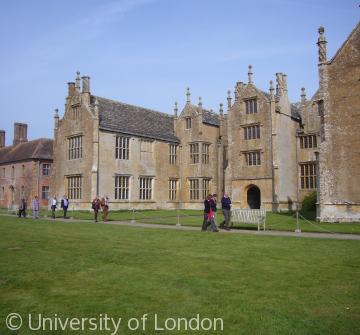Barrington Court

Various dates have been given for the Court from 1518 to 1550s or later. Barrington illustrates a change from the medieval asymmetrical house with the parlour end, hall and service end, readily distinguished by the size and quality of their windows, to a more symmetrical house which shows no such distinction. Many mid 16th-century houses in the south-west have similar features to Barrington. Of the two possible builders, Henry Daubeney, earl of Bridgwater and the merchant William Clifton, the former had no connection with Barrington other than ownership and had severe financial difficulties. William Clifton, however, was resident and was a generous benefactor to the parish, which makes him the most likely builder providing a date in the 1550s for the building.
By the 20th-century the house was a wreck and threatened with demolition or even removal to America but was saved by Canon Hardwicke Rawnsley, one of the founders of the National Trust. Barrington Court was the first great house acquired by the National Trust at a time when it had few resources. Money was given to enable repairs to be carried out costing £11,000 when a contemporary country house could be built for £4,000.
The restoration of the house, or rather its recreation, and the creation of the model estate surrounding it was the work of Col Arthur Lyle son of Abraham Lyle IV, son of a Scottish sugar refiner who began the Plaistow sugar refinery in 1883. Abraham converted the refinery waste into Lyle’s Golden Syrup, which claims to have the world’s oldest packaging still in use. Arthur Lyle seems to have left the running of the business to his cousin Charles and took to collecting ancient woodwork. Having taken on the lease of Barrington Court he employed Edward Forbes, an architect who trained in Edinburgh with Sir Owen Anderson and in London with Mountford, designer of the Old Bailey, to restore Barrington Court. Forbes may have brought the house to Lyle's attention and helped him to furnish it with Lyle's collection of woodwork and many skilful replicas










